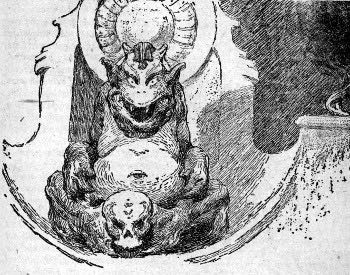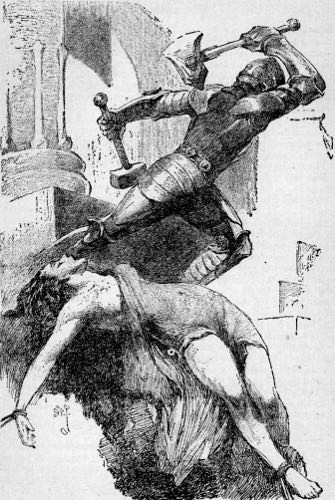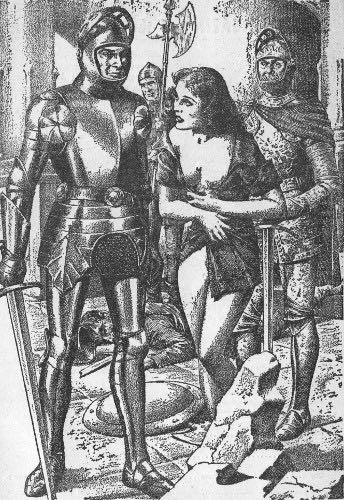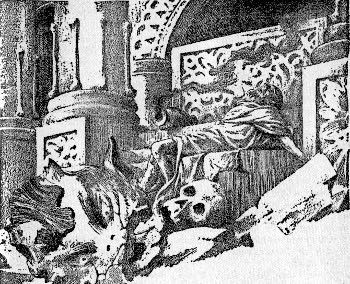Tedric, and Lord Tedric
Reviewed date: 2018 Jan 18
These two stories are the inspiration for the later Lord Tedric series written by Gordon Eklund. They bear little resemblence to Eklund's work.
Tedric
Prime Physicist Skandos uses the chronoviagram to study history and identify a crucial turning point. One small change could alter the course of history and prevent the ultimate catastrophe: "total destruction by lithium-tritiide bombs."
So he travels back in time and gives the secret of carburization and heat-treating to an ironmaster named Tedric. The ironmaster fashions himself a sword and armor. Then Tedric goes on a rampage against the priests and their god, Sarpedion. He slaughters the priests and destroys the idols, ending the practice of human sacrifice.
And he gets the girl.
Lord Tedric
Tedric's successes have stabilised the timeline, but ultimate destruction has not been avoided, merely delayed for a few hundred years. Skandos meddles some more.
Skandos appears again, this time to the whole assembly, and in disguise as the god Llosir. He commands the people to give him no sacrifices, ever. But the key point in history comes later, when Lord Tedric and King Phagon are conquering some nearby countries: King Phagon refuses to go into battle without wearing his gold armor. With soft gold armor, Skandos knows Phagon will die, and without his leadership, his nation--and their new, progressive, non-human-sacrificing religious cult--will lose the war.
So Skandos appears to Tedric and explains the process of gold leaf. Tedric covers a suit of iron armor in gold, King Phagon wears it and lives, history is altered, and nuclear holocaust is avoided. Well, postponed for a few hundred more years.
Thoughts
They aren't great stories, but we do see the standard Smith characters: super-smart scientists who take bold action, and slightly muscle-headed brave warriors who always rush in against impossible odds--and win.



